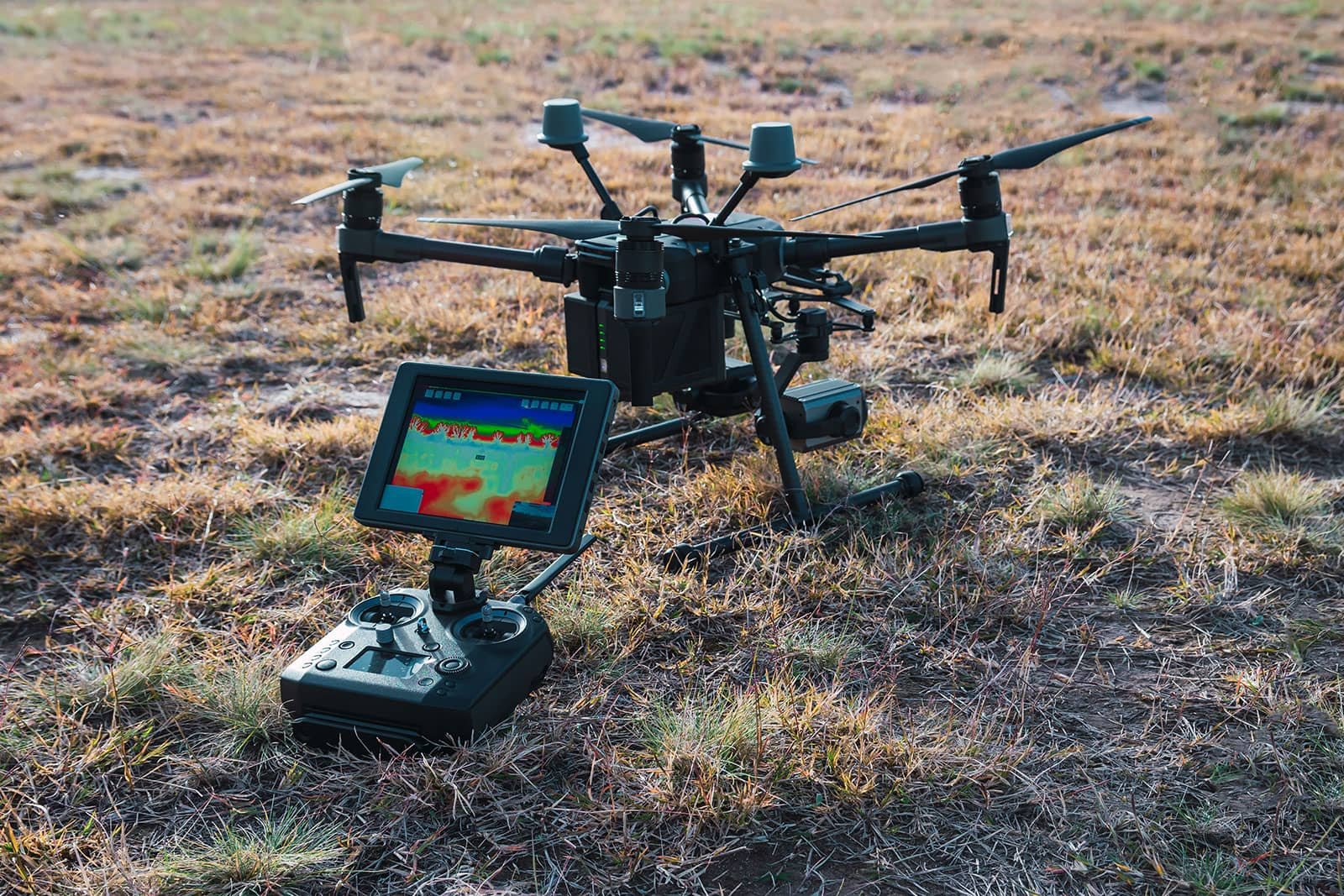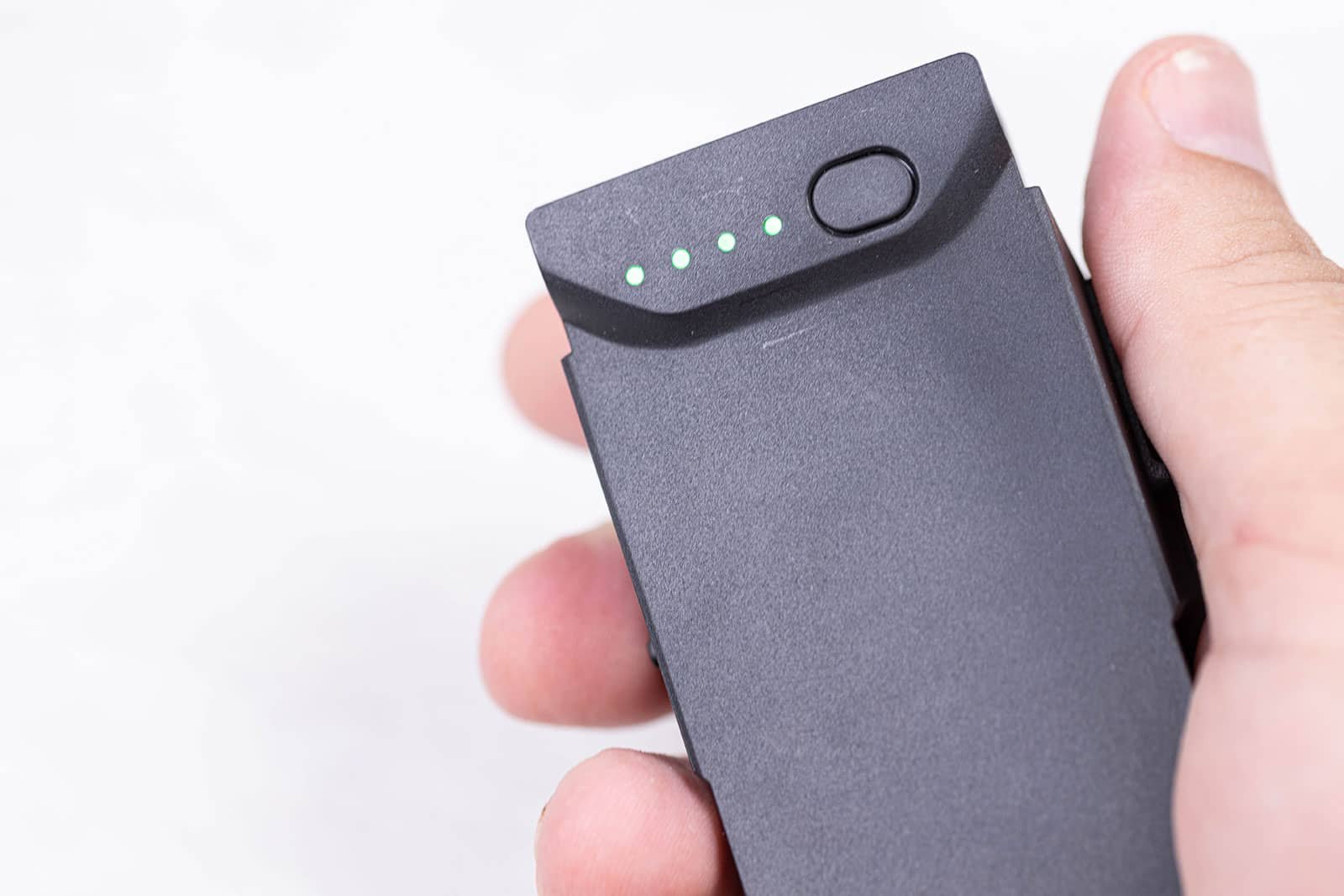
Some of the best drones with VR headsets are those that come with built-in cameras and headsets. These drones allow you to experience realistic videos and photos in a virtual reality setting. There are also drones that are specifically designed for this purpose, making it easier to get a good view of the surroundings.
Drones with virtual reality headsets are the new craze and for good reason. They offer an impressive aerial view that can be used for a variety of purposes including filming, photography, and even gaming.
The current state of the drone industry is that most drones are not equipped with a VR headset. This is where the best drones with VR headsets come in. They offer an immersive experience that can make you feel like you are right in the air. With these headsets, you can view 360-degree footage and photos that were taken while the drone was in flight.
What is a Drone with Headset or VR Drone??
A virtual reality drone is a device that allows people to experience a simulated environment by using a mobile device or computer. This type of drone can be used for a variety of purposes, such as flying through an obstacle-free environment or filming footage from an elevated perspective.
VR drones typically use a camera and sensors to create a 3D image that is displayed on a screen in front of the user. Some VR drones also allow the user to control the drone using their hands or a controller.
Best Drones with VR Headsets
Drones have become an increasingly popular hobby for many people, and with that comes a whole range of different drones. However, not all drones are suitable for VR use. In this article, we will be looking at the best drones with VR headsets so that you can enjoy your drone in a whole new way.
PNDStore is reader-supported. When you buy through links on our site, we may earn an affiliate commission. Learn more
DJI FPV Combo
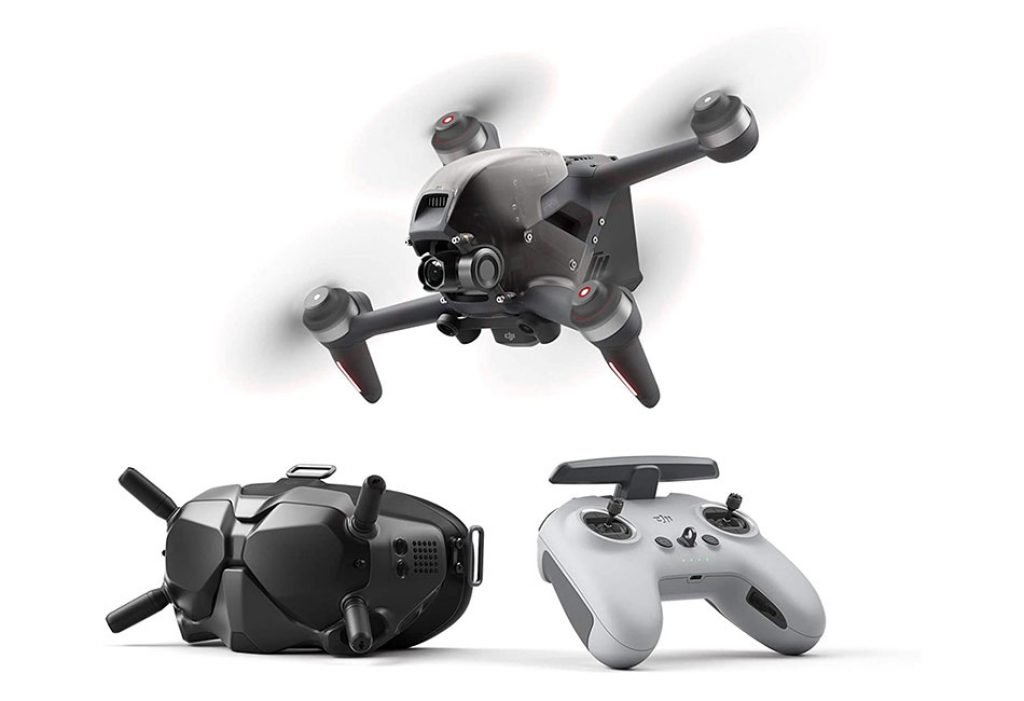
Today’s drones are powerful machines that can be used for a variety of purposes, but one of the most popular uses is for aerial photography and videography. One of the most popular drone models for this purpose is the DJI Phantom, but there is another option that is becoming more and more popular – the DJI FPV Combo. This drone combines features of both the Phantom and the Mavic Pro, making it one of the most versatile drones on the market.
The DJI FPV Combo might be the perfect option for you! This quadcopter features a 4K camera that allows you to capture stunning footage and photos in first-person view. Plus, its lightweight construction makes it easy to fly, so you can take your drone adventures to new heights.
With its advanced features, it’s perfect for anyone who wants to experience the thrill of aerial photography and video footage. The DJI FPV Combo is also very easy to fly, making it a great choice for beginners. All these make it one of the best drones with VR headsets on the market.
Features:
- Ocusync 3.0 Transmission System
- 4K/60fps video
- Smart Return to Home
- Good 6.2-mile range
- HD Low-Latency Transmission video
- Powerful performance
Tello Quadcopter Beginner Drone Powered by DJI Technology

If you’re looking for a quadcopter that is easy to fly and can take good-quality photos and videos, the Tello might be the perfect option for you. This drone is powered by DJI technology and comes with a VR HD video premium package, extra battery, remote controller, VR goggles and skin pack. The Tello is also very affordable, making it an ideal starter drone for beginners.
Additionally, the included extras make this drone one of the best drones with headsets for anyone looking to get into drone photography or videography. With its easy-to-use controls, this quadcopter is perfect for beginners who want to get into drone flying.
Best of all, you can enjoy your flights with the help of VR goggles and a skin pack, which makes flying even more immersive! Plus, it comes with an extra battery and remote controller, so you can get up and fly right away.
Features:
- 100m Image Transmission Distance
- VR Vue II Virtual Reality Viewer
- Up to 13-Min Flight Time
- HD 720p
- Extra Battery
- Precise control
EMAX Tinyhawk RTF Micro Indoor Racing Drone

The EMAX Tinyhawk is the perfect drone for indoor racing. This small and lightweight drone is easy to control and can race around a track quickly and easily. Whether you’re a beginner or an experienced drone racer, the EMAX Tinyhawk RTF Micro Indoor Racing Drone is a great choice.
It is small and compact, making it easy to transport and store. The drone has a range of up to 200 feet and can reach speeds of 35 mph. It also has an altitude hold function and a headless mode, making it easy to control and for its price is considered as one of the Best Drones with VR headsets out there.
The Tinyhawk is also equipped with a camera that can record high-quality footage, so you can share your victories with your friends and family. The EMAX Tinyhawk also features durable construction that can withstand crashes and intense play.
Features:
- Lightweight, durable
- FPV goggles
- Up to 35mph
- Up to 200 feet distance
PowerVision PRW10 Powerray Wizard Underwater Drone

The PowerVision PRW10 is a powerful underwater drone with a 4K UHD camera. It is capable of capturing stunning images and videos of underwater objects and wildlife. The drone also has a range of capabilities, including real-time mapping, 3D scanning, and autonomous navigation.
This drone has a camera that can capture stunning images and videos at resolutions up to 4K resolution. It has a flight time of up to 30 minutes and can reach a maximum speed of 15mph. Additionally, the drone has a range of up to 260 feet, so you can take photos and videos from a great distance. Plus, its compact design makes it easy to take with you wherever you go.
This drone also has a built-in sonar system that allows you to see in complete darkness and it is one of the best Drones with VR Headsets, especially for underwater. It also has an altimeter, barometer, and thermometer to measure water temperature and condition, and a GPS system to track its location.
Features:
- Up to 98 feet underwater
- Transmission up to 260 feet
- Internal Wi-Fi system
- 64GB memory card
- 4K UHD camera
QYSEA FIFISH V6 ROV Underwater Drone with 4K UHD Camera

The QYSEA FIFISH V6 ROV Underwater Drone is perfect for those interested in underwater photography and videography. With its 4K UHD camera and VR headset, you can dive to 330ft and capture stunning footage and photos. This makes it perfect for exploring the depths of your favorite waterway or diving site.
The QYSEA FIFISH V6 ROV Underwater Drone also comes with a VR headset which lets you experience the underwater world in a whole new way. The drone has autorotation and return-to-home functions.
With its cutting-edge features and sleek design, this device is perfect for both professional and amateur filmmakers. Specially made for underwater environments, these specially designed lenses thrive in dim lighting. The True Color algorithm in the FIFISH APP makes every step clear and bright.
Features:
- 360° free movement
- Motion sensor VR headset
- Image Stabilization
- 4K UHD Camera
- Dive to 330ft
- 166° FOV fixed lens
BETAFPV Cetus Pro FPV Drone Kit for FPV Beginners
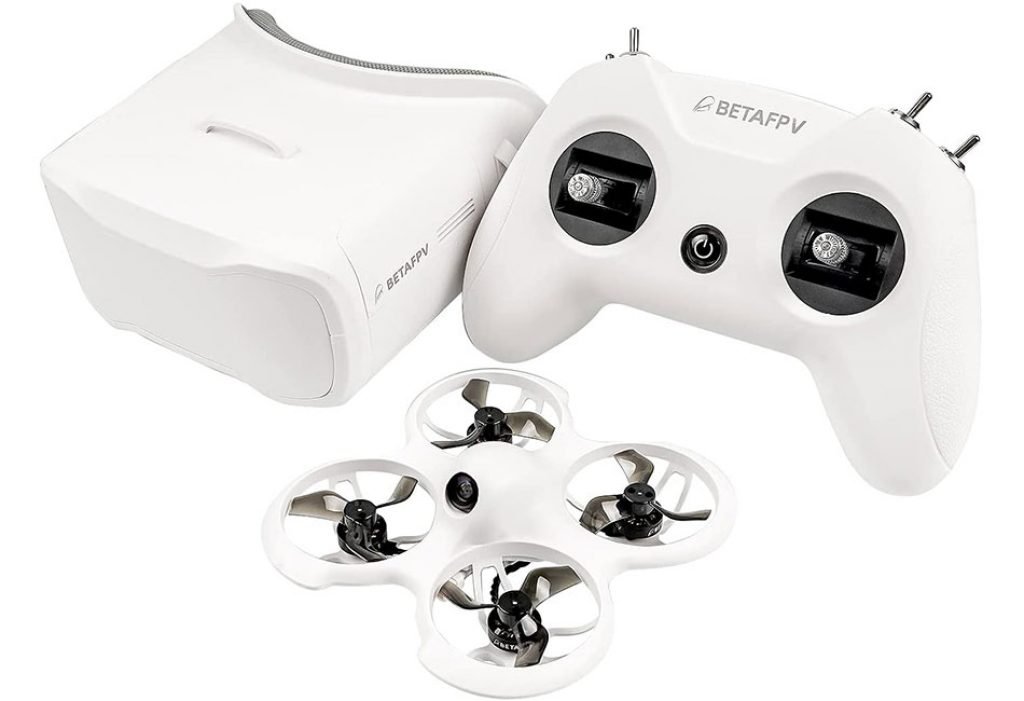
BETAFPV Cetus Pro FPV Drone Kit for FPV Beginners is perfect for beginners who want to learn how to fly a drone with FPV goggles. This kit includes everything you need to get started, including a radio transmitter and FPV goggles. The Cetus Pro is easy to fly and has an 8MP camera that captures beautiful footage.
With its user-friendly design and easy-to-follow assembly instructions, this kit is perfect for the first-time drone pilot. This kit comes with a radio transmitter and FPV goggles, making it easy to get started with FPV flying. Plus, the price is very reasonable compared to other similar kits.
The Cetus Pro drone’s self-protection function guarantees that it will take an approach and execute a safe dive if it loses its hold or has low battery. It will also instantly jet down and protect itself in the event of a collision. This is one of the Best Drones with VR headsets, especially for beginners.
Features:
- 3 Flight Modes
- Altitude hold function
- Self-protection Function
- Brushed motor
- Easy to Fly
Makerfire Micro FPV Racing Drone with FPV Goggles
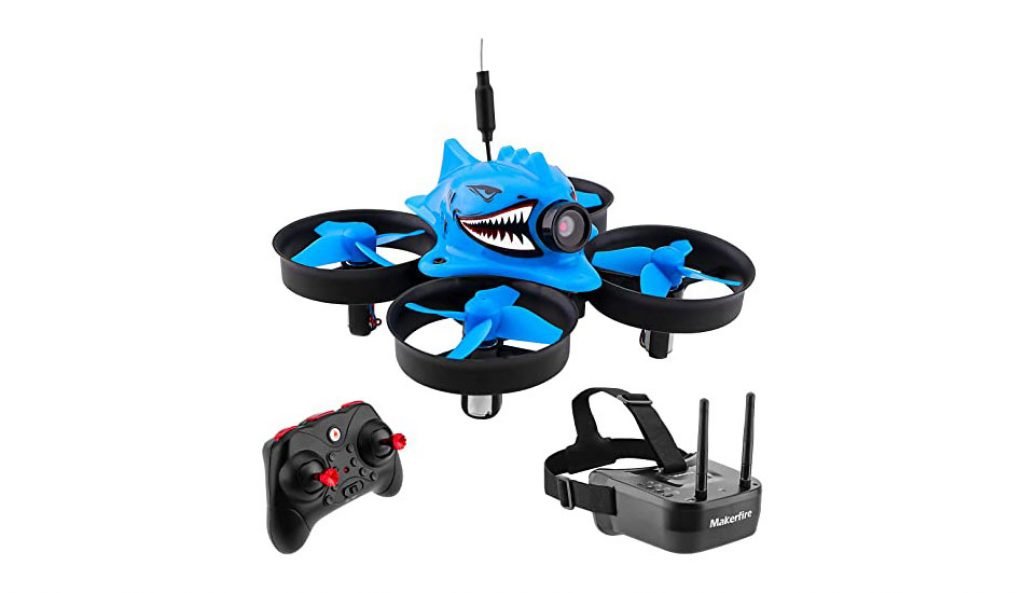
If you’re looking for a micro FPV drone that is easy to fly, Makerfire has the perfect option for you. This drone comes with a 5.8G 40CH 1000TVL camera and FPV goggles so you can get started racing right away. Plus, its small size makes it easy to carry around and take with you wherever you go. If you’re new to FPV flying, this is the perfect quadcopter to start with!
This Racing Drone is perfect for beginners who want to experience the thrill of racing on a miniature drone. It is easy to fly and comes with included FPV goggles that let you see what’s happening in real-time. Press the remote control, the aircraft will automatically return, with no extra work, very easy and convenient. The pressure altitude hold function makes the aircraft stable and user-friendly to control.
Features:
- Easy to Control
- Safe and Durable
- 360° flip flight
- Wide-angle HD camera
- Altitude Hold Mode
- Headless Mode
- One Key Return
Popular drone with VR Headset FAQs
What does VR stand for?
Virtual reality (VR) is a technology that creates an immersive experience for users by creating a simulated environment that can be explored and interacted with using special head-mounted devices. The first VR headsets were developed in the 1980s, but it wasn’t until recently that the technology has begun to gain widespread attention. There are now numerous VR applications available, including games, social experiences, and educational tools.
Virtual reality is a technology that immerses a person in a simulated environment. It can be used for entertainment or education.
What’s the difference between Wifi and 5.8Ghz FPV?
FPV (first person view) drones have become increasingly popular in recent years as a way to get a bird’s eye view of an event or activity from the comfort of your home. While both wifi and 5.8ghz FPV are used to control the drone, there is a significant difference between the two. WiFi FPV requires a connection to the internet in order to function, while 5.8ghz FPV does not. This means that 5.
5.8GHZ FPV
FPV is a great way to experience your RC aircraft in a whole new way. With FPV you can see what the aircraft sees from inside, giving you an immersive experience.
5.8GHz FPV is one of the newest frequencies in the FPV spectrum. It has many benefits, such as extended range, better image quality and less interference.
WIFI FPV
WiFi FPV uses a wireless connection to send video and control signals between an FPV camera and your drone. There is a growing trend of pilots using WiFi FPV to gain an aerial perspective of their flights. WiFi FPV has many advantages over traditional FPV systems, including the ability to view footage on a phone or computer while you are flying, no need for an expensive hardware system, and the ability to share the footage with other pilots.
How to connect a drone to a VR headset?
With the increasing popularity of virtual reality (VR), it’s no surprise that there are more and more ways to enjoy this technology. One popular way to experience VR is through a headset such as Oculus Rift or HTC Vive. However, if you want to experience VR without having to buy an expensive headset, consider using a drone to connect to your head-mounted display (HMD).
If you’re looking to get into drone racing or aerial photography, you’ll need a way to connect your drone to a VR headset. There are a few different ways to do this, and each has its own set of pros and cons.
What is the difference between VR and AR?
VR and AR are two different types of virtual reality that have been growing in popularity in recent years. Here’s a look at the key differences between these two immersive technologies.
Virtual reality (VR) and augmented reality (AR) are two different types of technology that allow users to experience a simulated environment that is different than the real world. VR immerses users in a virtual environment, while AR overlays digital information on top of the real world. There are several distinctions between the two technologies, including how they are used, who is using them, and their potential applications.
Ar is a form of virtual reality that is made up of a number of sensors placed around the user’s head and body, and it uses an immersive headset to create a three-dimensional environment. Virtual reality allows users to experience events and situations as if they were actually there.




